- Home
- Richard Flanagan
And What Do You Do Mr. Gable? Page 2
And What Do You Do Mr. Gable? Read online
Page 2
It is perhaps not possible to write anything of sense of such a senseless event, a passage of horror that can perhaps never be explained. And yet some sense has to be made of it, or we cannot begin to try to stop such a thing ever happening again. The massacre is only meaningless if we capitulate to its madness as inevitable, as part of the human condition that we must now tolerate.
We need to rediscover that as people we need others not to kill, but to love. And for that we need to rediscover that we are communities. It is possibly a sign of the times that I feel foolish writing such a thing, but it is all I have to offer against what has taken place. My children sleep well, but now I wonder for how long. There are no more once upon times, only nows, and I will have to explain something of this to them. But though I have tried, I cannot answer the insistent question that haunts me and everyone else I know this night as searchers discover yet more and more bodies and the gunman remains at large: How have we come to this?
The Age
29 April 1996
NOTHING, WRITES BORGES, is more secondary to a book’s achievement than the intentions of its author. And in the end novels, the great subversive medium, subvert not only what society thinks is right, but what the writer intends to write.
And why?
Because a novel, when it succeeds, takes the writer beyond his own history and character, escapes the shackles of his politics and opinions, and the alchemy of story makes of the writer’s soul that which joins one human being with all human beings. For this reason Kipling’s wonderful stories can never be reduced to his imperialism, nor Dostoevsky’s genius invalidated by his anti-Semitism.
Some writers are of course political beings, others are not, but this is a guide to little. Bad writers can have admirable politics, while Hamsun and Pound most certainly didn’t. Great books can be great campaigning vehicles: one thinks of Turgenev’s A Sportsman’s Notebook, said to have led to the decision to emancipate the serfs, or much of Dickens. Books that are written in opposition to politics, questioning its very basis, can in repressed and tyrannical societies become ironically freighted with enormous political significance: one thinks of Dr Zhivago or Life and Fate (of the latter it was decreed by the head of the KGB that no one was to read the book for two hundred years).
But Turgenev’s or Dickens’ political beliefs are no longer why we read these writers, nor is the persecution of Pasternak or the confiscation of Grossman’s masterpiece why these books matter. They continue to be read, perhaps, because we recognise them as simply being true to the chaos of life. If a novel can achieve this, it can never be reduced to an ideology, and will always remain the enemy of lies and oppression.
Writing does not excuse a writer from political choices and actions, but nor does it demand them of him. These are matters between a man and a soul, which a writer must face up to along with the plumber, the hairdresser and the executive. Paradoxically, the writers most concerned about making politics part of their work often write work that is autistic to the politics of its times; while writers with almost no interest sometimes write most perceptively of their era: amidst the agitprop wastes of the 1920s, no one more shrewdly foretold the political apocalypse looming than Kafka, the man who recorded the most historically significant event in his life, the start of World War I, with a fine sense of human proportion: ‘Morning: war declared. Afternoon: went for a swim.’
There are so many forces in the world that divide us deeply and murderously. In recent times we have lived through not so much a crisis of politics as a collapse of that most human attribute, empathy—a collapse so catastrophic it sometimes appears to be a crisis of love, manifest in epidemics of loneliness and depression. This strange event seems most pronounced in the West in the USA, a country where pessimism about the future of the novel has become its most persistent literary tradition.
We cannot escape politics, history, religion, nationalism—for their sources lie as deep in our hearts as love and goodness, perhaps even deeper. But at its best, art reminds us of all that we share, of all that brings us together.
For this reason books matter. For this reason books aren’t just novelty items or celebrity front-list accompaniments; one more marketing platform for the famous and the powerful. In a world where the road to the new tyrannies is paved with the fear of others, great books show us that we are neither alone, nor in the end that different; that what joins us is always more important than what divides us; and that the price of division is ever the obscenity of oppression.
Bookforum
May 2008
WRITERS, STALIN FAMOUSLY DECLARED, were engineers of the human soul. This old idea seems sadly renascent. Recently I read that ‘culture is the software of the nation’.
Yet great art is the soul, not its maker, far less its engineer or software, and it reminds us of the chaos in every human heart. In their greatest moments, artists and the art they make exist in opposition, speaking to those things that we need as individuals but that seemingly threaten us as societies: truth, freedom, non-conformity, desire, and so on.
All great art is amoral. It offers neither guidance on how to live, nor wisdom on how to reconcile with this world. It simply takes us into the chaotic soul of things, reminding us of the full possibilities of this life.
Art is the closest thing we have to holding on to that inner spirit world that we feel always to be on the verge of vanishing and that we recall only as the vaguest of sensations: the touch of a loved one, the shadow of a forgotten tree, the sound of a parent crying.
And yet there can be no doubt that art influences politics and history, a fact the most powerful readily acknowledge. ‘Do you know,’ Napoleon once said to Fontanes, ‘what fills me most with wonder? The powerlessness of force to establish anything. There are only two powers in the world: the sword and the mind. In the end the sword is always conquered by the mind.’
It is obvious that art is also a series of products subject to fashion and commerce. But it is not reducible to a product in the way self-massaging ugg boots I saw for sale in Harvey Norman are.
Art is, of course, a guarantee of nothing. Nor is love. But for similar reasons we have not yet discovered a way of living without it. Unlike self-massaging ugg boots, we need it.
‘In reading the gospels,’ wrote Oscar Wilde when in Reading Gaol—and let us not forget that there he was allowed nothing else to read—‘I see the continual assertion of the imagination as the basis of all spiritual and material life. I see also that to Christ imagination was simply a form of love.’
This seems a beautiful, and a very true, observation. We live in a world where it is relentlessly and arrogantly presumed that all is knowable and sayable; that everything can be encapsulated in some formula of words.
Worse, we feel that unless we can measure something as material worth or tangible power, it is irrelevant.
And yet all of life that matters happens in a realm beyond knowing and measuring, and nothing is more unsayable, unknowable, immeasurable, more isolated from analysis than acts of the imagination fired by love.
Sadly, we in Australia have in recent years become largely indifferent, even sometimes hostile, to such acts. There has developed a shame about our national experience and those artists who seek to speak to it, not so distant from the colonial cringe of the 1950s.
We need change. We could once more as a nation commit to the idea of art, but not as a national fashion accessory in the manner of a 1980s ALP policy platform nor, as was argued the following decade, of art as an economic driver. For while art can be harnessed to such uses, it is not why it matters.
We could decide to acknowledge and honour art as central to what we are as human beings. Because to fail to recognise its centrality to our humanity is to leave the realms of civil society and public life caught in a coarsening of public rhetoric and collapse of empathy that has been wrong, inhumane and ultimat
ely damaging to us as a people.
Of course, we won’t.
But it is worth thinking about, if only because art is knowing ourselves more fully as human beings and, more than ever, we need that knowledge at the centre of what we now do. And yet, more than ever, it is absent. The empire’s prefects and satraps take counsel only from the abacus, call on the flagellator to restore order, and cannot understand why the barbarians are advancing. Without art, without an honouring of its foundation in love, there is no answer that can be made to the scream of the child whose mother was just blown up in yet one more Baghdad bomb blast, or the silence of the Bangladeshi peasant watching his home and village disappearing beneath a rising sea.
The Sydney Morning Herald
15 January 2008
In this world
we walk on the roof of hell
gazing at flowers
Issa
IN MARCH 1996, just before setting out on a solo trip to walk the rugged Western Arthurs in Tasmania’s south-west, Peter Dombrovskis called. He wanted to talk about a forthcoming book of his photographs of Mount Wellington for which I was writing an introductory essay. The mountain defines Hobart and links it to the great wildlands of Tasmania. For generations Hobartians have walked, climbed, camped, tobogganed, swum and played over the mountain. Peter worried that the growing emphasis on notions of ‘sacred wilderness’ created a lie, or rather that it was the other pole of a lie. He lived on one of the mountain’s higher flanks, and for him the mountain showed that the natural world wasn’t something separate from human beings but the essence of us.
Peter talked of doing a book on gardens to further explore this idea. In a world in which humanity is ever more autistic to the natural world, he felt that anything that allowed people communion with nature mattered. Looking back on it now, I think he found all ways of being part of nature at once rich and mysterious. Rather than being dogmatic, Peter was curious.
He asked me about the boulders on the upper Huon River. He knew I was one of the few who had kayaked it and he wanted to know what they were like.
Why? I asked.
Because Olegas told me that they were beautiful, he said. One day I’d like to photograph them.
Olegas was Olegas Truchanas, a Lithuanian who arrived in Tasmania post-World War II and established a considerable reputation as both an explorer and landscape photographer. Truchanas had been the first to kayak the upper Huon, as well as the Gordon River. In one of several ironies, he worked as a draftsman for Tasmania’s Hydro-Electric Commission, which, with its dams, was systematically destroying the wildlands that Truchanas was exploring, photographing and fighting to protect.
In the 1960s Truchanas began staging slide shows in the Hobart City Hall, showing the threatened wildlands with accompanying classical music. From the beginning these seemingly innocuous couplings of image and music were understood as the most political of events.
Then, in the great bushfire of 1967, his home and with it his slide collection was lost. Truchanas, now ageing, returned to the south-west to try to rebuild his archive of images of all that was on the verge of vanishing. In 1972, on a kayaking trip down the now threatened Gordon River, he lost his footing on a submerged log and disappeared into the dark, tannin-stained waters.
‘He had been destroyed, with Biblical simplicity,’ wrote Truchanas’ friend Max Angus, ‘by two of the elements, fire and water. Five years had passed between their brief and terrible visits. He had perished in the river he sought to save. Classical mythology affords no stronger example of the drama of the incorruptible man who passes into legend.’
It was a young man who three days later found Truchanas’ drowned body. He was the fatherless son of a Latvian migrant, born in a refugee camp in Germany in 1945, for whom Olegas had become a father-figure, teaching him canoeing and photography. His name was Peter Dombrovskis.
A month later Dombrovskis returned to Lake Pedder, which Truchanas through his kayaking trip had been attempting to help save. From the same spot on the Coronets where Truchanas once had taken a photograph, he took an almost identical picture of the lake and its famed beach.
‘I like to think,’ Dombrovskis later said, ‘I’m carrying on where Olegas left off, in my own way, finishing the work he started.’
But Lake Pedder was as doomed as Truchanas. Within three years it would vanish.
Yet Truchanas’ influence soared in the 1970s and 1980s, spurred on by the publication of a book of his photographs, The World of Olegas Truchanas (1975). As the environmental movement went mainstream, Truchanas passed into myth as a martyr. Meanwhile, with the publication of Dombrovskis’ early books The Quiet Land (1977) and Wild Rivers (1983) and his bestselling wilderness calendars, he became seen as Truchanas’ heir. His photograph of the Franklin River at Rock Island Bend became the most celebrated landscape photograph in Australian history. Used by conservationists, it was said to have helped sway the federal election of 1983 in favour of Bob Hawke’s Australian Labor Party which promised to save the Franklin River.
It is perhaps not possible to convey what powerful effect the example of Olegas Truchanas and Peter Dombrovskis—the artist as adventurer; the merging of life and art; the radical and liberating possibilities of the natural world—had upon many Tasmanians growing up in the benighted, marginal and often self-hating Tasmania of the 1970s and 1980s. They created another Tasmania; an invitation to dream open to all.
Outside of Tasmania, the work of Truchanas and Dombrovskis has often appeared baffling. To some, their representations of landscape seem at best conventional, drawing from a romantic tradition that seems outdated, even reactionary. That their work has endured is strange; that it had radical political edge even more mysterious, and in some ways reprehensible. For the antipathy to art and artists in Australia that remains such a strong and destructive force in our national life sometimes appears to have been internalised and taken up by the Australian art world itself. It expresses itself variously: that great Australian lack of generosity to difference as well as a fear of any art that has political connotation, or, for that matter, spirit. It has also led to a culture of the corral: unless an artist is on the inside, part of a grant and gallery and critic system, they are not an artist.
Truchanas was a draftsman. Dombrovskis made a journeyman living, selling his images as postcards, calendars and books. They lived in Tasmania and made art about Tasmania, an island at once alien and marginal to Australia. It’s hard to imagine artists more on the outside.
To the extent they had a politics, it was not the monocultural nationalism of the Labor Party that had so often been the bedrock creed for how Australian art was divined. Since Federation, Australian art was seen to have a mission to make a single national culture in the image of either its great coastal cities or its mainland dry outback. Whatever the aesthetic it wore as its motley, that was the goal.
Though a nation, Australia is not one country but many, and one of these is the country of Tasmania. Both men created an idea of Tasmania that could not be dismissed as regional or small, and that, like all powerful artistic ideas, contained a universe within it. For many on the island, these two artists were liberating—they showed us we lived not imprisoned in a small place dully conformist to a weary, century-old trope, but as part of a world of infinite possibility. But in so doing they also drew attention to the profound human choice that went with that world. To seek to know it better, to love it, or to agree to its destruction.
Talent is love, Tolstoy once said. The idea that great art is made out of love and can only be comprehended through love recurs through history in defiance of schools, traditions, aesthetics and ideologies. Love unleavened, of course, leads to kitsch. But with the yeast of circumstance, history and ambition added, enduring work sometimes arises.
Dombrovskis’ work has been criticised as determinedly false, refusing to acknowledge the human elemen
t of the natural world by rarely showing humans or human artefacts. But the argument seems to make no more sense than applying it to abstract art. Dombrovskis spoke of how a photograph had to be filled with the character of the photographer or it was nothing. His images are, finally, an idea of humanity. But it is a particular and haunting idea of who we are and what we might be.
It is true that the conservation movement of the 1980s promoted a sense of ‘wilderness’ in which man had never been and should never intrude upon. Given human history in Tasmania is at least 40,000 years old and man has played a key role in shaping these wildlands for that long, such an idea was both demonstrably untrue and, as Dombrovskis understood, damaging to our souls. Though both men were environmentalists, and though that same movement used their images to promote environmental causes, as the years pass, as the politics recede, the images endure and seem to speak of something much larger and more evocative than the battles of that era. Much of Dombrovskis’ later work finds erotic images of women in abstracted landscapes. The close-up still lifes of kelp-wrack, broken sea shells, myrtle leaf swirls, sand rib, snow-gum bark and river spume grow ever more mysterious, open and powerful.
I sometimes think both Truchanas’ and Dombrovskis’ attitude to the natural world of Tasmania can only be understood as a response to the immense human horror of World War II in Eastern Europe. At the edge of the world, where the contours of progress were more visible than at its centre, two photographers, refugees of the last great global conflict of nation and ideology against nation and ideology, perhaps came closer than many of their more celebrated peers in speaking of the conflict to come—of man against the natural world, and the terrible cost not just to our environment and economy, but to our humanity if we did not try to prevent it, if we did not try to understand ourselves and our world differently.

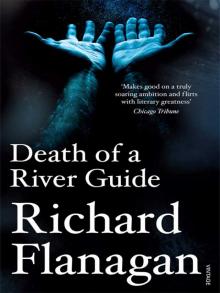 Death of a River Guide
Death of a River Guide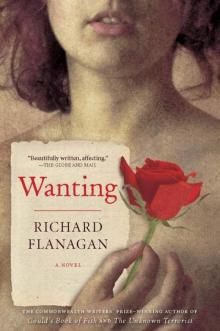 Wanting
Wanting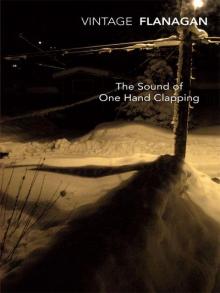 The Sound of One Hand Clapping
The Sound of One Hand Clapping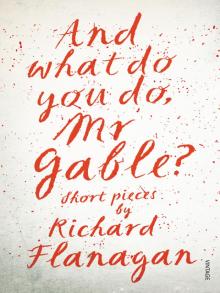 And What Do You Do Mr. Gable?
And What Do You Do Mr. Gable?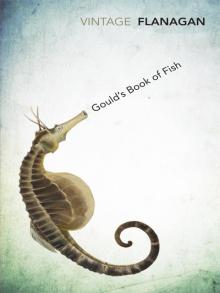 Gould's Book of Fish: A Novel in Twelve Fish
Gould's Book of Fish: A Novel in Twelve Fish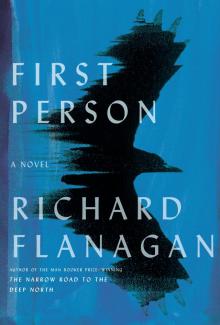 First Person
First Person The Unknown Terrorist
The Unknown Terrorist The Narrow Road to the Deep North
The Narrow Road to the Deep North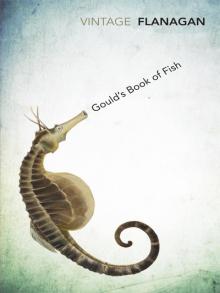 Gould's Book of Fish
Gould's Book of Fish